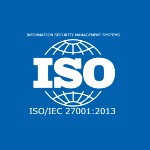What Differentiation Means for Competitive Strategy
Posted by | Fuld & Company
Strategy guru, Michael Porter defines competitive strategy in very simple terms. Strategy, he says, is performing different activities from your rivals, or performing similar activities in different ways. At the heart of this definition is the concept of differentiation – defining what a firm does in ways that demonstrate unique value for which customers are willing to pay.
When defining activities in ways that communicate genuine differentiation, companies have a choice: they can either rely on definitions of their value propositions that have stood the test of time, and that reflect essentially what customers believe they do, or they can constantly innovate and redefine their value proposition to create a truly differentiated position in the market. It is the latter pathway that casts fealty to Porter’s definition of strategy.
For companies that have been in the same business for decades, or for new entrants to well-established industries, successfully defining a competitive strategy, or re-defining a value proposition in a truly differentiated fashion can be extremely difficult.
Take, for example, General Electric. What business is GE in? One might respond “power turbines” or “aircraft engines” or even “appliances” even though GE sold its appliance business in 2016. We wouldn’t say that GE is a “digital industrial” company. But, that’s exactly what former CEO Jeffrey Immelt wanted you to say, after he spent six years and nearly $4 billion to try to transform GE into a software and services company. GE’s legacy, combined with an inefficient strategic execution, rendered this attempted transformation a failure.
Whereas if we consider IBM’s case, its transformation was driven largely by changes in technology and customer needs, but former CEO Lou Gerstner saw these shifts on the horizon and set out to change IBM’s value proposition from providing business machines to enterprise customers to providing services that integrate complex enterprise IT environments. It was not just a claim; the company took concrete actions to achieve that value proposition. It included external consulting to bring true professional services experience into the organization, and shredding legacy hardware businesses that had run their course.
If a firm succeeds in redefining itself to the market in meaningful ways, sound competitive strategy requires that rivals ask themselves what sets them apart from their competitors.
Because, for every GE, there is an IBM or a Corning Glass – companies that have achieved successful redefinitions of themselves and, in doing so, have managed to outpace competition and achieve or retain industry leadership.
“What business are we in?” and “Who is competing with us?” When firms ask these questions often enough, the answers can be surprising. The next generation of business leaders is aiming for such a surprise and the London IOD open house this year had a couple of them that amazed us:
- McLaren Automotive manufactures exclusive, high-performance automobiles. Spun off from the Formula One McLaren Racing team, the company produces products including the 789-horse power McLaren Senna, which retails for £750,000. Former McLaren CEO Mike Flewitt, however, considered the automobile company an entertainment business. In a 2017 interview, he said, “The cars are fun. We are providing entertainment more than transport, and the more you can do this, the more complete the experience.”
- Nissan, the automotive company, in partnership with power management firm Eaton entered the residential power storage market in the United Kingdom in 2016 by using second-life batteries from its electric vehicles to serve as residential power storage solutions. Instead of drawing it as a distinct business entity, it now claims to be a renewable energy and energy storage solution provider.
- Leon Restaurants, which opened its first fast food outlet in London in 2004, entered an established industry by asking a question: what if God did fast food? The resulting business: naturally fast food, a term that many consider an oxymoron. Leon is out to prove that a fast food chain can serve food that tastes good and does the consumer good. In doing so, it is defining itself as a health and well-being company, from which you can get a grilled halloumi wrap on the high street for £4.60..
It is hard to trumpet unconventional value propositions, and even more difficult to realize that something fundamental has changed in the industrial landscape.
Such turning times can use best practices for spotting when a competitor has, or is attempting to, proactively redefine its position in a market, and for developing a counter-competitive strategy in response.
- Monitoring secondary source data points such as public statements, competitor websites, executive interviews, amongst other sources aren’t enough. Smart competitors are going to make sure they have honed and tested their new value proposition before revealing it to the market, and by the time they do, it will be too late to react.
- Instead, a habit of questioning your company’s beliefs about the industry and competitors in it given the customer dynamics is more efficient. A number of structured techniques and frameworks can help:
- Key Assumptions Check on your competitors, in which you explicitly state your inherent beliefs, truisms, suspicions, and stereotypes about your competitors, and rate them based on the amount of evidence and intelligence you have, to support each one.
- Win-Loss Analysis to regularly hear directly from your customers how competitors are communicating their value to buyers, and whether buyers believe the competitors’ messaging.
- What If Analysis to stress test a competitor’s value message amid plausible industry developments, and to experiment with how a competitor might redefine how it differentiates itself amid potential market disruptions.
Sound competitive strategy calls for constant innovation and redefinition of a firm’s value proposition in the context of the industry today. To keep ahead of competitors and solidify unique offerings that customers are willing to pay for, companies should constantly re-examine competition and its beliefs about them.
Tags: Brand Strategy, Competitive Advantage, Competitive Intelligence, Competitive Strategy, Consumer Products & Retail, Digital Transformation, Energy, Europe, Travel & Leisure, United Kingdom (UK), Win/Loss Analysis



















